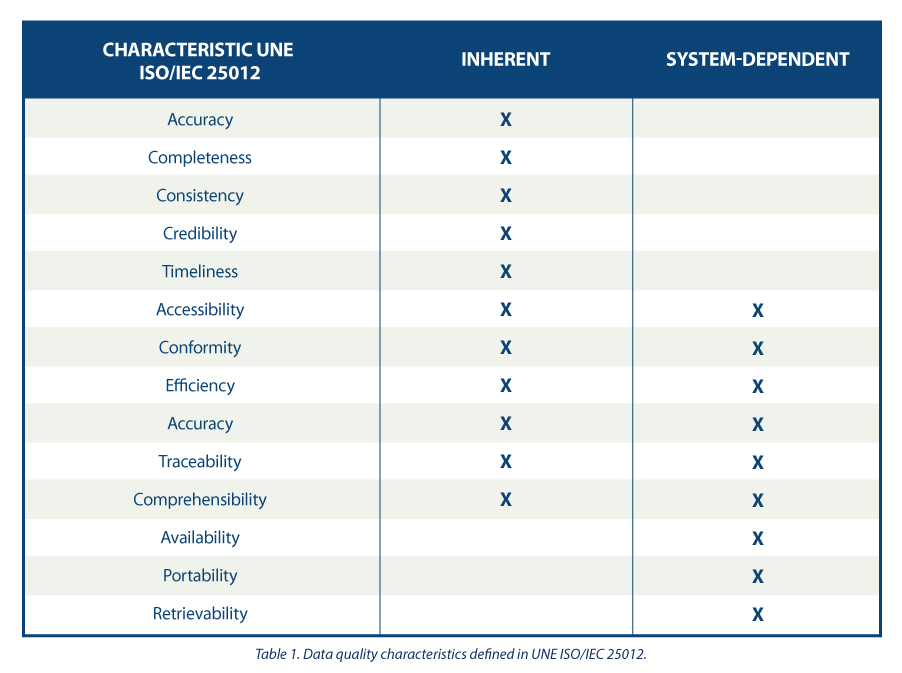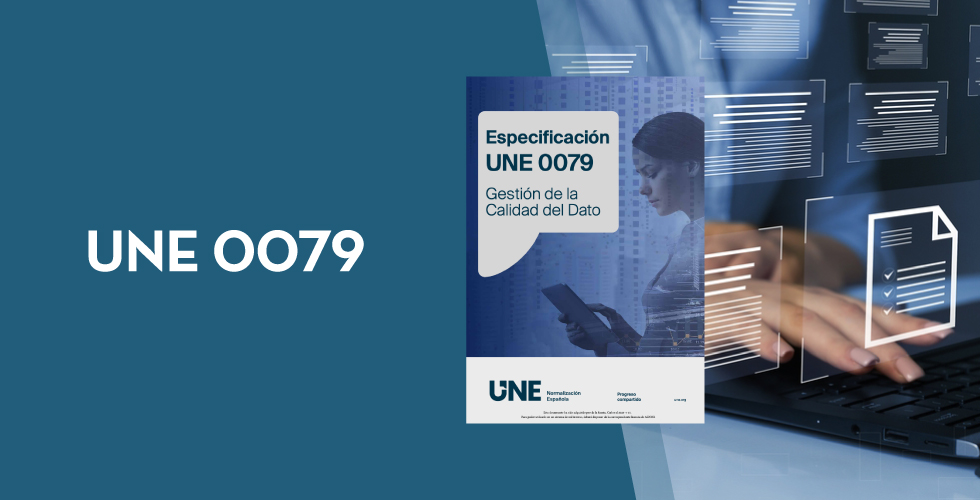
Today, data quality plays a key role in today's world, where information is a valuable asset. Ensuring that data is accurate, complete and reliable has become essential to the success of organisations, and guarantees the success of informed decision making.
Data quality has a direct impact not only on the exchange and use within each organisation, but also on the sharing of data between different entities, being a key variable in the success of the new paradigm of data spaces. When data is of high quality, it creates an environment conducive to the exchange of accurate and consistent information, enabling organisations to collaborate more effectively, fostering innovation and the joint development of solutions.
Good data quality facilitates the reuse of information in different contexts, generating value beyond the system that creates it. High-quality data are more reliable and accessible, and can be used by multiple systems and applications, which increases their value and usefulness. By significantly reducing the need for constant corrections and adjustments, time and resources are saved, allowing for greater efficiency in the implementation of projects and the creation of new products and services.
Data quality also plays a key role in the advancement of artificial intelligence and machine learning. AI models rely on large volumes of data to produce accurate and reliable results. If the data used is contaminated or of poor quality, the results of AI algorithms will be unreliable or even erroneous. Ensuring data quality is therefore essential to maximise the performance of AI applications, reduce or eliminate biases and realise their full potential.
With the aim of offering a process based on international standards that can help organisations to use a quality model and to define appropriate quality characteristics and metrics, the Data Office has sponsored, promoted and participated in the generation of the specification UNE 0081 Data Quality Assessment that complements the already existing specification UNE 0079 Data Quality Management, focused more on the definition of data quality management processes than on data quality as such.
UNE Specification - Guide to Data Quality Assessment
The UNE 0081 specification, a family of international standards ISO/IEC 25000, makes it possible to know and evaluate the quality of the data of any organisation, making it possible to establish a future plan for its improvement, and even to formally certify its quality. The target audience for this specification, applicable to any type of organisation regardless of size or dedication, will be data quality officers, as well as consultants and auditors who need to carry out an assessment of data sets as part of their functions.
The specification first sets out the data quality model, detailing the quality characteristics that data can have, as well as some applicable metrics, and once this framework is defined, goes on to define the process to be followed to assess the quality of a dataset. Finally, the specification ends by detailing how to interpret the results obtained from the evaluation by showing some concrete examples of application.
Data quality model
The guide proposes a series of quality characteristics following those present in the ISO/IEC 25012 standard , classifying them between those inherent to the data, those dependent on the system where the data is hosted, or those dependent on both circumstances. The choice of these characteristics is justified as they encompass those present in other frameworks such as DAMA, FAIR, EHDS, IA Act and GDPR.

Based on the defined characteristics, the guide uses ISO/IEC 25024 to propose a set of metrics to measure the properties of the characteristics, understanding these properties as "sub-characteristics" of the characteristics.

Thus, as an example, following the dependency scheme, for the specific characteristic of "consistency of data format" its properties and metrics are shown, one of them being detailed


Process for assessing the quality of a data set
For the actual assessment of data quality, the guide proposes to follow the ISO/IEC 25040 standard, which establishes an assessment model that takes into account both the requirements and constraints defined by the organisation, as well as the necessary resources, both material and human. With these requirements, an evaluation plan is established through specific metrics and decision criteria based on business requirements, which allows the correct measurement of properties and characteristics and interpretation of the results.
Below is an outline of the steps in the process and its main activities:

Results of the quality assesment
The outcome of the assessment will depend directly on the requirements set by the organisation and the criteria for compliance. The properties of the characteristics are usually evaluated from 0 to 100 based on the values obtained in the metrics defined for each of them, and the characteristics in turn are evaluated by aggregating the previous ones also from 0 to 100 or by converting them to a discrete value from 1 to 5 (1 poor quality, 5 excellent quality) depending on the calculation and weighting rules that have been established. In the same way that the measurement of the properties is used to obtain the measurement of their characteristics, the same happens with these characteristics, which by means of their weighted sum based on the rules that have been defined (being able to establish more weight to some characteristics than to others), a final result of the quality of the data can be obtained. For example, if we want to calculate the quality of data based on a weighted sum of their intrinsic characteristics, where, because of the type of business, we are interested in giving more weight to accuracy, then we could define a formula such as the following:
Data quality = 0.4*Accuracy + 0.15*Completeness + 0.15*Consistency + 0.15*Credibility + 0.15*Currentness
Assume that each of the quality characteristics has been similarly calculated on the basis of the weighted sum of their properties, resulting in the following values: Accuracy=50%, Completeness=45%, Consistency=35%, Credibility=100% and Currency=50%. This would result in data quality:
Data quality = 0.4*50% + 0.15*45% + 0.15*35% + 0.15*100% + 0.15*50% = 54.5%
Assuming that the organisation has established requirements as shown in the following table:

It could be concluded that the organisation as a whole has a data score of "3= Good Quality".
In summary, the assessment and improvement of the quality of the dataset may be as thorough and rigorous as necessary, and should be carried out in an iterative and constant manner so that the data is continuously increasing in quality, so that a minimum data quality is ensured or can even be certified. This minimum data quality can refer to improving data sets internal to an organisation, i.e. those that the organisation manages and exploits for the operation of its business processes; or it can be used to support the sharing of data sets through the new paradigm of data spaces generating new market opportunities. In the latter case, when an organisation wants to integrate its data into a data space for future brokering, it is desirable to carry out a quality assessment, labelling the dataset appropriately with reference to its quality (perhaps by metadata). Data of proven quality has a different utility and value than data that lacks it, positioning the former in a preferential position in the competitive market.
The content of this guide, as well as the rest of the UNE specifications mentioned, can be viewed freely and free of charge from the AENOR portal through the link below by accessing the purchase section and marking “read” in the dropdown where “pdf” is pre-selected. Access to this family of UNE data specifications is sponsored by the Secretary of State for Digitalization and Artificial Intelligence, Directorate General for Data. Although viewing requires prior registration, a 100% discount on the total price is applied at the time of finalizing the purchase. After finalizing the purchase, the selected standard or standards can be accessed from the customer area in the my products section.
https://tienda.aenor.com/norma-une-especificacion-une-0080-2023-n0071383
https://tienda.aenor.com/norma-une-especificacion-une-0079-2023-n0071118
https://tienda.aenor.com/norma-une-especificacion-une-0078-2023-n0071117
https://tienda.aenor.com/norma-une-especificacion-une-0077-2023-n0071116


